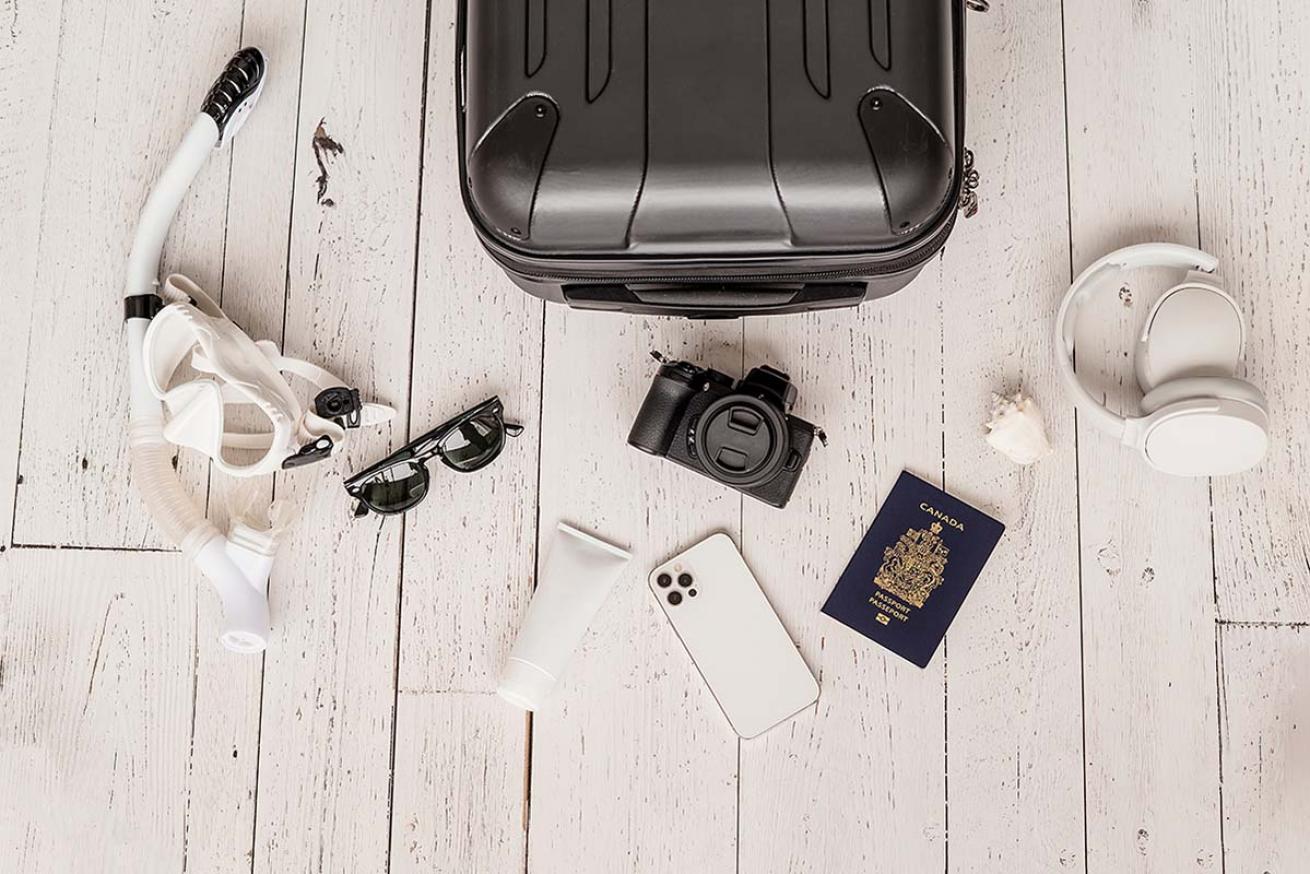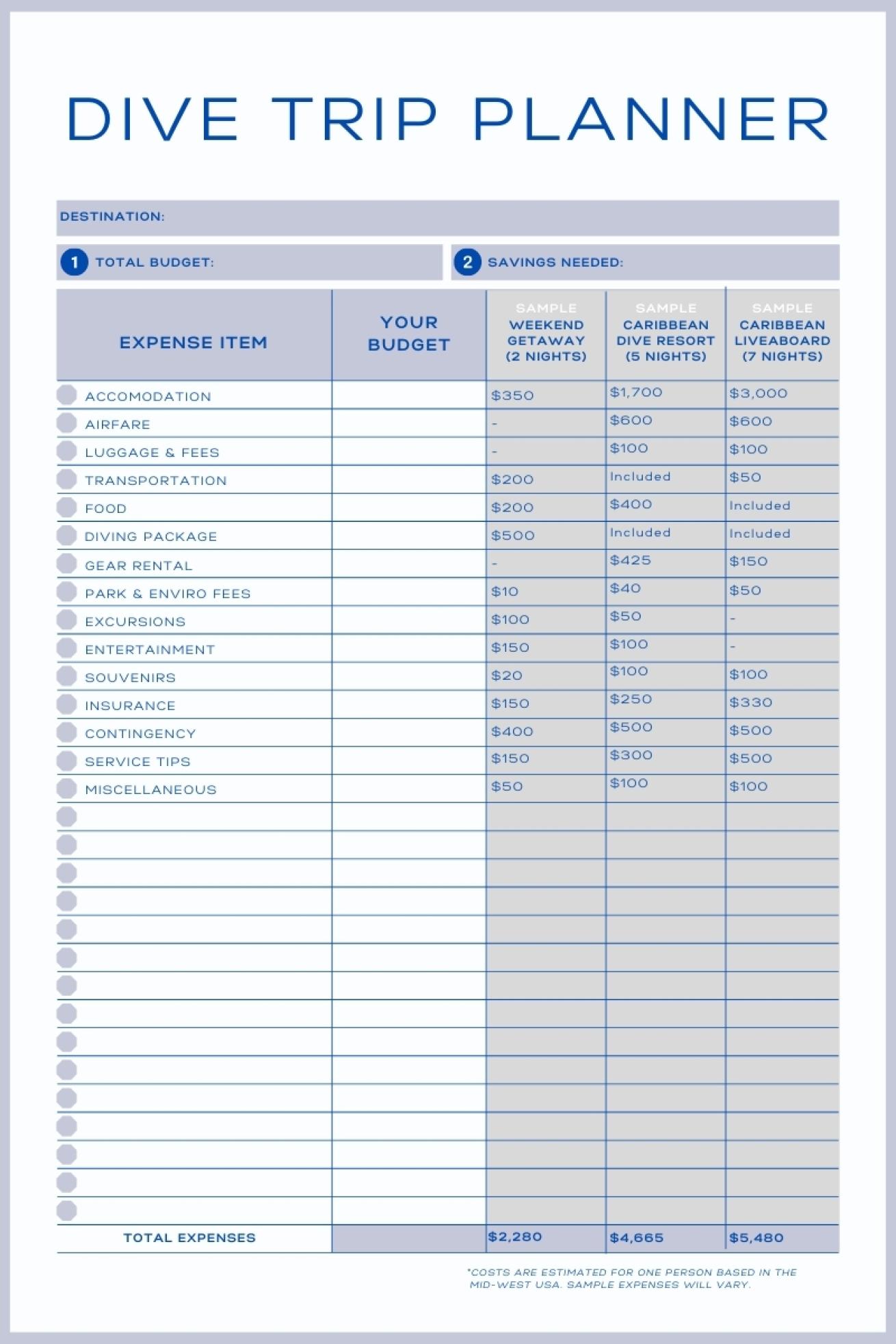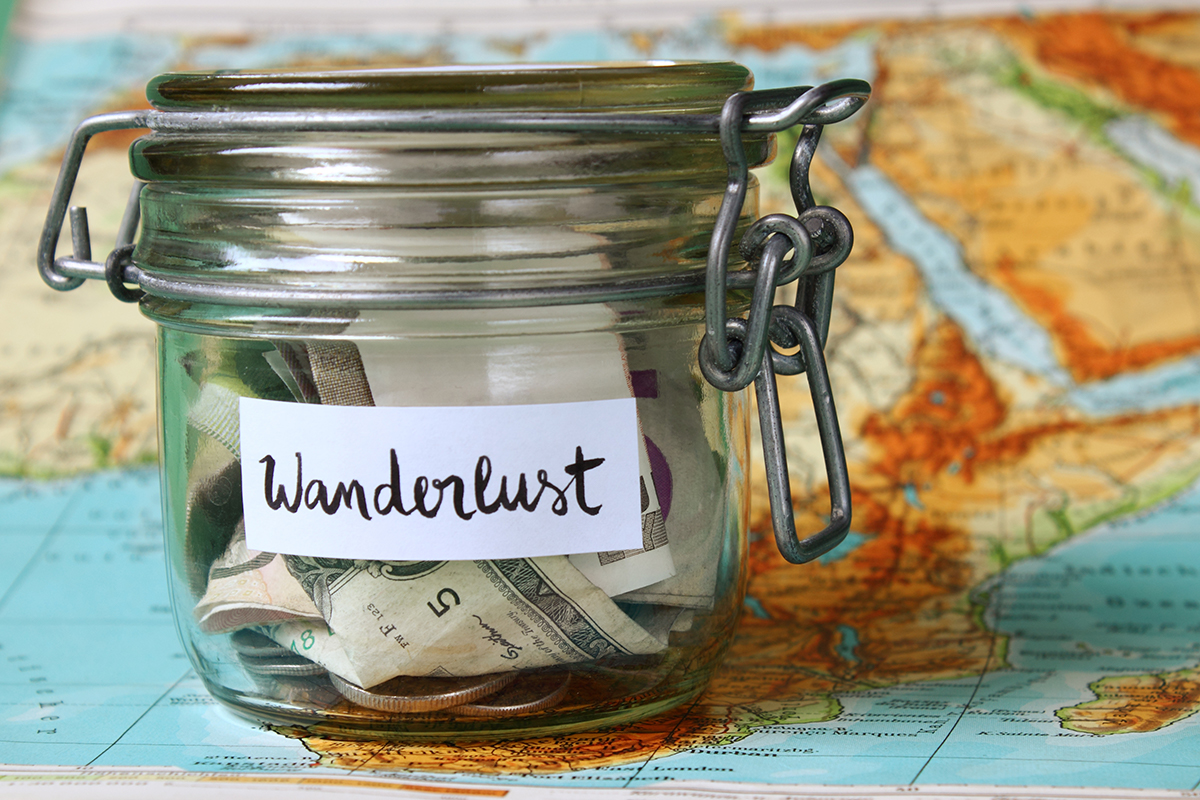How to Create a Dive Trip Budget

Shutterstock.com/Jennylee_LariviereGet more dive for your dollar by planning ahead.
Spontaneous travel seems like a great plan until unexpected costs stop you from going on that whale shark dive. Luckily, forecasting your finances is as easy as one-two-three: set your trip foundation, forecast major expenses and calculate the final figure. Follow these three steps — with help from the dive trip budgeting worksheet — to make your next trip a reality.
Step 1: Set the Foundation
These two factors will shape your trip:
- Funds — Calculate a specific dollar amount you are comfortable spending (at most) on this trip. This will help you know when you need to make tradeoffs as you plan.
- Experience — What are you traveling to do? Clarifying this goal will help you know where you really want to splurge, and where you should skimp.
Once you’ve set these planning guard rails, move on to step two.
Step 2: Forecast Major Expenses
The largest portions of your trip’s budget will depend on the kind of adventure you take. Land-based or liveaboard? Near or far? Think ahead to the largest expenses and gather pricing to plug into your planner (see step three). These eleven questions will help you account for your trip expenses:
1. Where will you stay? The type of lodging can make a huge impact on your budget—a liveaboard will likely cost more than a road trip.
2. How will you get to your destination? Flights and associated airport fees will take a large percentage of your budget if you’re traveling far. (Remember to include gear and luggage fees.)
3. How will you get around once there? Add up estimates for transportation including taxis, shuttles, car rentals and parking.
4. What will you eat? Food is a highly variable category. You can choose to be frugal or indulgent which can offer some flexibility in your budget.
5. How much diving do you want to do? Visit dive shop websites, or online agencies like PADI Travel, and determine the diving package costs.
6. Will you rent dive gear or bring your own? Rentals can vary greatly depending on the location and amount of diving you are doing.
7. Are you required to pay marine park fees? Many conservation programs rely on tourism dollars to operate, charging pay-per-use fees or requesting donations.
Traveler Tip: If you are planning on visiting a country with a different currency, remember to factor the exchange rate in your budget.
8. How much will you tip the crew? Dive pros work hard day-in and day-out lugging tanks and guiding you underwater. Tipping them is a great way to show your appreciation for making your underwater adventure possible! Ten to 15 percent of the activity cost is a good rule of thumb, more if the service was exceptional.
9. What will you do with your topside time? Some sightseeing locations are free, but others have a costly admission. If you are a souvenir shopper or enjoy outings, assign extra funds to this category.
10. How much will insurance cost? Include all travel, flight, car, and personal dive insurance on your budget.
11. Have you planned for an emergency? Putting aside two days’ worth of accommodation and food per person is a good start. (If you return home with this unspent, deposit it into your savings account for your next trip!)
12. How much will you put aside for accidental overspending? Costs change—you never know when that Uber ride will incur Surge pricing. Allocating some money for overspend ahead of time means shift costs cause less stress.
Step 3: Calculate the Final Figure
Now it’s time to put it all together. Below is a simple worksheet with sample scenarios that will help get you started. The top section allows you to enter the total budget you identified in step one, calculate how much you need to save to get there.

Rachel HuberA thorough budget cuts down on unexpected costs.
Congratulations! You’re done with your budget—now go make some bubbles.











